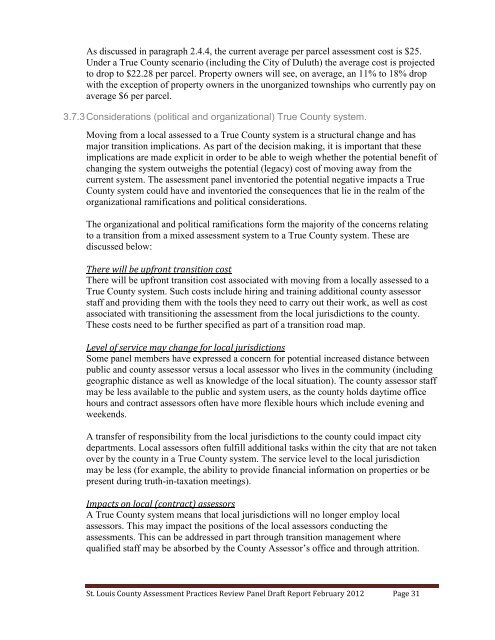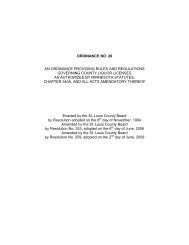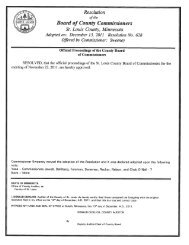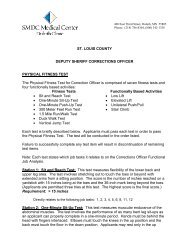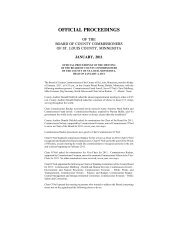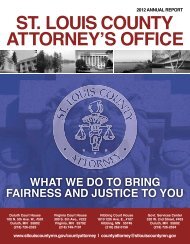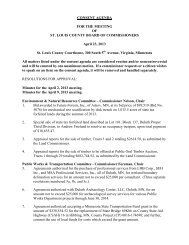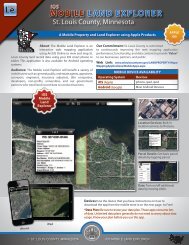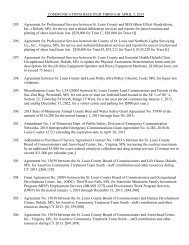Assessment Practices Review Panel - St. Louis County
Assessment Practices Review Panel - St. Louis County
Assessment Practices Review Panel - St. Louis County
Create successful ePaper yourself
Turn your PDF publications into a flip-book with our unique Google optimized e-Paper software.
As discussed in paragraph 2.4.4, the current average per parcel assessment cost is $25.<br />
Under a True <strong>County</strong> scenario (including the City of Duluth) the average cost is projected<br />
to drop to $22.28 per parcel. Property owners will see, on average, an 11% to 18% drop<br />
with the exception of property owners in the unorganized townships who currently pay on<br />
average $6 per parcel.<br />
3.7.3 Considerations (political and organizational) True <strong>County</strong> system.<br />
Moving from a local assessed to a True <strong>County</strong> system is a structural change and has<br />
major transition implications. As part of the decision making, it is important that these<br />
implications are made explicit in order to be able to weigh whether the potential benefit of<br />
changing the system outweighs the potential (legacy) cost of moving away from the<br />
current system. The assessment panel inventoried the potential negative impacts a True<br />
<strong>County</strong> system could have and inventoried the consequences that lie in the realm of the<br />
organizational ramifications and political considerations.<br />
The organizational and political ramifications form the majority of the concerns relating<br />
to a transition from a mixed assessment system to a True <strong>County</strong> system. These are<br />
discussed below:<br />
There will be upfront transition cost<br />
There will be upfront transition cost associated with moving from a locally assessed to a<br />
True <strong>County</strong> system. Such costs include hiring and training additional county assessor<br />
staff and providing them with the tools they need to carry out their work, as well as cost<br />
associated with transitioning the assessment from the local jurisdictions to the county.<br />
These costs need to be further specified as part of a transition road map.<br />
Level of service may change for local jurisdictions<br />
Some panel members have expressed a concern for potential increased distance between<br />
public and county assessor versus a local assessor who lives in the community (including<br />
geographic distance as well as knowledge of the local situation). The county assessor staff<br />
may be less available to the public and system users, as the county holds daytime office<br />
hours and contract assessors often have more flexible hours which include evening and<br />
weekends.<br />
A transfer of responsibility from the local jurisdictions to the county could impact city<br />
departments. Local assessors often fulfill additional tasks within the city that are not taken<br />
over by the county in a True <strong>County</strong> system. The service level to the local jurisdiction<br />
may be less (for example, the ability to provide financial information on properties or be<br />
present during truth-in-taxation meetings).<br />
Impacts on local (contract) assessors<br />
A True <strong>County</strong> system means that local jurisdictions will no longer employ local<br />
assessors. This may impact the positions of the local assessors conducting the<br />
assessments. This can be addressed in part through transition management where<br />
qualified staff may be absorbed by the <strong>County</strong> Assessor’s office and through attrition.<br />
<strong>St</strong>. <strong>Louis</strong> <strong>County</strong> <strong>Assessment</strong> <strong>Practices</strong> <strong>Review</strong> <strong>Panel</strong> Draft Report February 2012 Page 31


